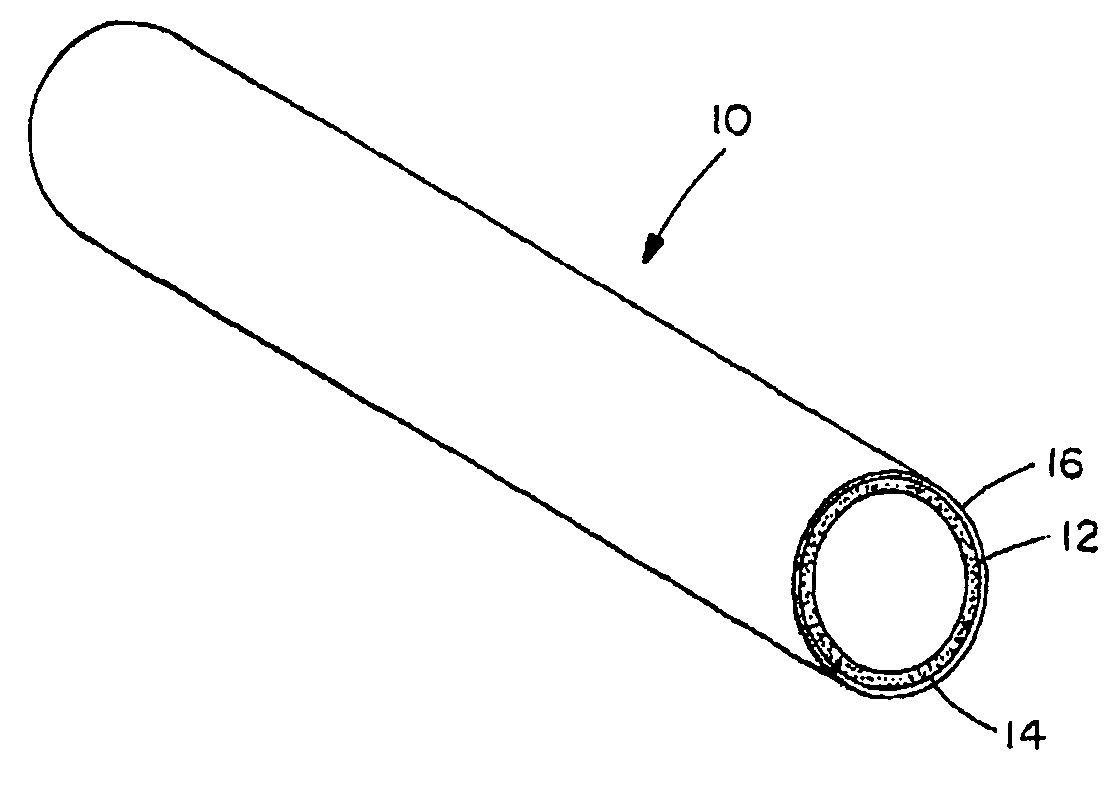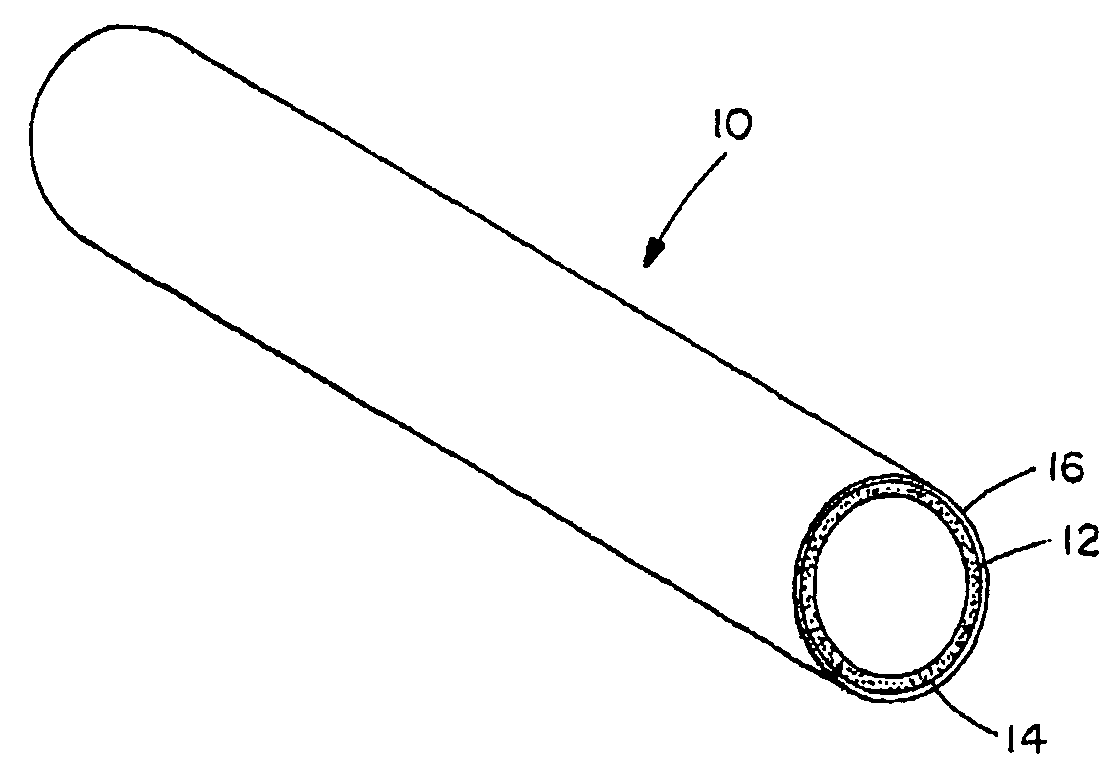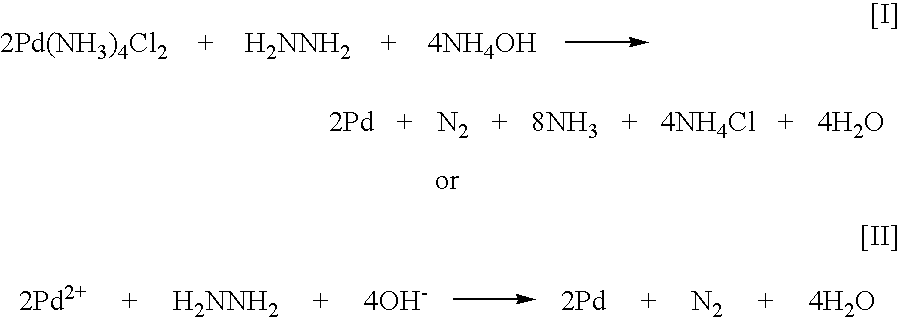Composite gas separation modules having intermediate porous metal layers
a gas separation module and porous metal technology, applied in separation processes, membranes, coatings, etc., can solve the problems of reducing the hydrogen permeability of the membrane, reducing the effective life of the typical composite gas separation module having a hydrogen-selective metal membrane bonded to a porous substrate, and generally unsuitable polymer membranes, etc., to prevent or reduce the diffusion of substrate components, improve the adhesion of the dense hydrogen-selective membrane, and reduce the effect of the a technology of composite gas separation module and composite gas separation module composite gas separation module and porous metal layer technology applied in the field of composite gas separation module and porous metal layer technology, which is applied in the field of composite gas separation module and porous metal layer technology, which is applied in the field of porous metal layer technology, which is applied in the field of porous metal layer adhesion and adsorption ra
- Summary
- Abstract
- Description
- Claims
- Application Information
AI Technical Summary
Benefits of technology
Problems solved by technology
Method used
Image
Examples
example 1
[0089]This example describes the fabrication of a composite structure comprising palladium, an intermediate porous metal layer (e.g., a porous metal layer intermetallic diffusion barrier), and a 0.1 micron grade porous 316L stainless steel (“PSS”) support.
[0090]A 6 inch long, 1 inch O.D., section of PSS tube, welded to sections of 1 inch O.D. dense, non-porous 316L stainless steel tube on each end, was obtained from Mott Metallurgical Corporation. Contaminants were removed by cleaning the tube in an ultrasonic bath with alkaline solution at 60° C. for one half hour. The tube was then sequentially rinsed using tap water, deionized water and isopropanol.
[0091]The tube was oxidized in static air at 400° C. for 12 hours wherein the rates of heating and cooling were 3° C. per minute. The oxidized tube was then surface activated by sequentially immersing the tube in aqueous baths of SnCl2 and PdCl2. The tube was immersed in 500 mL of aqueous SnCl2 (1 g / L) at 20° C. for about 5 minutes and...
example 2
[0104]This example describes the fabrication of a composite structure comprising palladium, an intermediate porous metal layer (e.g., a porous metal layer intermetallic diffusion barrier), and a 0.1 micron grade porous 316L stainless steel (“PSS”) support. A hydrogen selective membrane was formed on a 40 inch long section of 1 inch O.D. PSS using procedures substantially the same as those described in Example 1.
[0105]The total palladium and silver thickness of the finished membrane (the total noble metal thickness) was 25.5 microns, determined gravimetrically. The membrane was tested for hydrogen permeation at 450° C. and 500° C. with a 1 atmosphere pressure differential. This membrane had hydrogen permeance of 5.05 Nm3 / m2-hr at 450° C. and 5.67 Nm3 / m2-hr at 500° C. Based on these two permeance measurements, the activation energy was estimated to be about 10.8 kJ / mol.
example 3
[0106]This example describes an experiment showing the stability of an intermediate porous metal layer.
[0107]An intermediate porous metal layer of palladium and silver was deposited on a porous 316L stainless steel (“PSS”) support. The support was a 6 inch long, 1 inch O.D. section of 0.1 micron grade PSS tube, welded to sections of 1 inch O.D. dense 316L stainless steel tube on each end, obtained from Mott Metallurgical Corporation.
[0108]Contaminants were removed by cleaning the tube in an ultrasonic bath with alkaline solution at 60° C. for one half hour. The tube was then sequentially rinsed using tap water, deionized water and isopropanol.
[0109]The tube was oxidized in air at 400° C. for 10 hours wherein the rates of heating and cooling were 3° C. per minute. The oxidized tube was then surface activated by sequentially immersing the tube in aqueous baths of SnCl2 and PdCl2. The tube was immersed in 500 mL of aqueous SnCl2 (1 g / L) at 20° C. for about 5 minutes and was subsequentl...
PUM
| Property | Measurement | Unit |
|---|---|---|
| thick | aaaaa | aaaaa |
| thick | aaaaa | aaaaa |
| thick | aaaaa | aaaaa |
Abstract
Description
Claims
Application Information
 Login to View More
Login to View More - R&D
- Intellectual Property
- Life Sciences
- Materials
- Tech Scout
- Unparalleled Data Quality
- Higher Quality Content
- 60% Fewer Hallucinations
Browse by: Latest US Patents, China's latest patents, Technical Efficacy Thesaurus, Application Domain, Technology Topic, Popular Technical Reports.
© 2025 PatSnap. All rights reserved.Legal|Privacy policy|Modern Slavery Act Transparency Statement|Sitemap|About US| Contact US: help@patsnap.com



